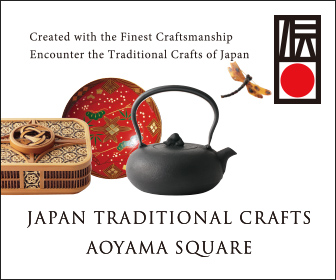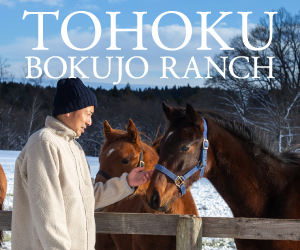SPRING CONFECTIONERY
COLORFUL SNACKS HERALD ARRIVAL OF SPRING
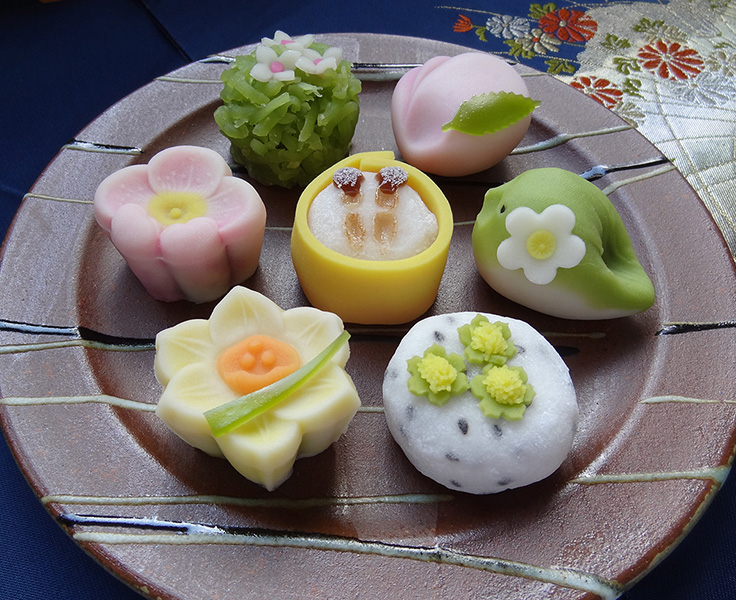
GETTY IMAGES
Spring is anticipated all over the world, but in Japan it has particular significance. March marks the end of the fiscal year at corporations, as well as the end of the school year, while April marks new starts for both. So spring is both a time of endings and beginnings. The flora and fauna are out in full force, headlined by the world-famous cherry blossoms that slowly blanket the country, starting in the south in March and ending in May in the north. People are filled with anticipation as they begin school or start new jobs — it is indeed a time of celebrations.
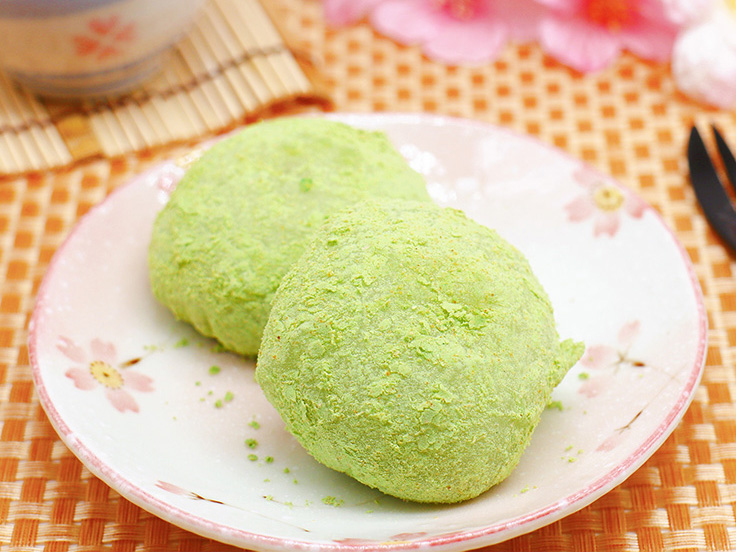
GETTY IMAGES

GETTY IMAGES
The most colorful and delicious ways in which the coming of spring is celebrated is through wagashi, a type of traditional Japanese snack. These morsels, mostly sweet but some savory, take their inspiration from the change of the seasons, and the colors and forms of nature. Spring wagashi start to appear in February around risshun, the first day of spring on the old Japanese calendar. This is when wagashi like uguisu mochi (glutinous rice) start to appear. An uguisu is a Japanese bush warbler, whose sweet trilling calls are a harbinger of the season. Uguisu mochi is coated with a light green powder made of soy beans and emulates the green color of the bird. Another, darker green sweet is yomogi mochi, in which young leaves of yomogi (Japanese mugwort) are blanched, ground up and kneaded into soft dough. The bright green color conveys anticipation for the warmer days ahead.
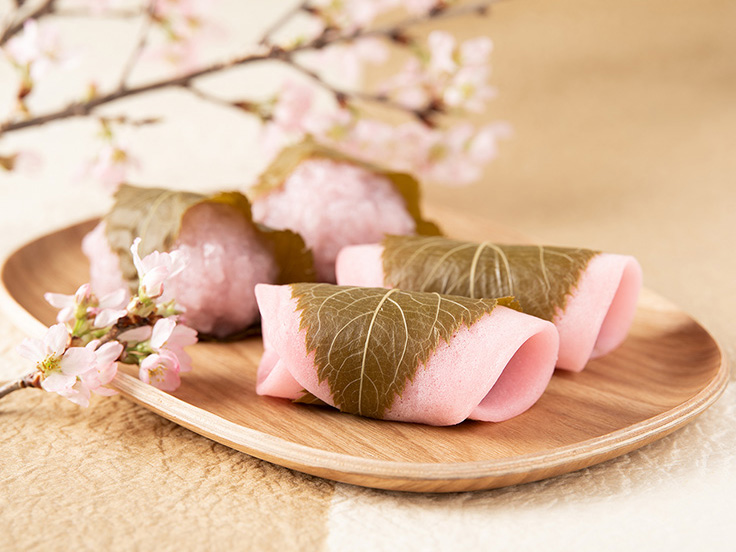
GETTY IMAGES
The best-known spring wagashi may be sakura (cherry blossom) mochi, which are actually made with salt-preserved cherry tree leaves from the year before. The leaves impart a distinctive taste that Japanese recognize as “sakura flavor.” This differs from the flavor of cherries and comes from a substance called coumarin that is also present in tonka beans and cinnamon. Sakura flavor speaks so strongly of spring that several major coffee, confectionery and restaurant chains use it in their products when the season comes. There’s everything from sakura-flavored frappuccinos to donuts and chocolates.
There are two major types of sakura mochi. The Kansai type, which originates from the preserved foods eaten at the more than 1,000-year-old Domyoji temple in Osaka, is made with a ground short rice flour called Domyo-ji-ko that is dyed pink, filled with an (a sweet adzuki bean paste) and wrapped with a salt-preserved cherry leaf. The rice in Kansai sakura mochi retains its granular shape, giving it a pleasant texture.
Kanto-style sakura mochi, on the other hand, is called the Chomei-ji type. It was created by a wagashi maker in Mukojima, Edo (the former name of Tokyo), in 1717, and sold in front of nearby Chomeiji temple. It consists of a thin crepe made of rice and wheat flour wrapped with a salt-preserved cherry leaf. The crepe is colored a delicate pink, providing a contrast with the muted green of the leaf.
For both types of sakura mochi, the previously mentioned sakura flavor from the leaves, combined with the saltiness, provide a distinct and pleasant accent that enhances the sweetness of the bean paste and the texture of the crepe or rice.
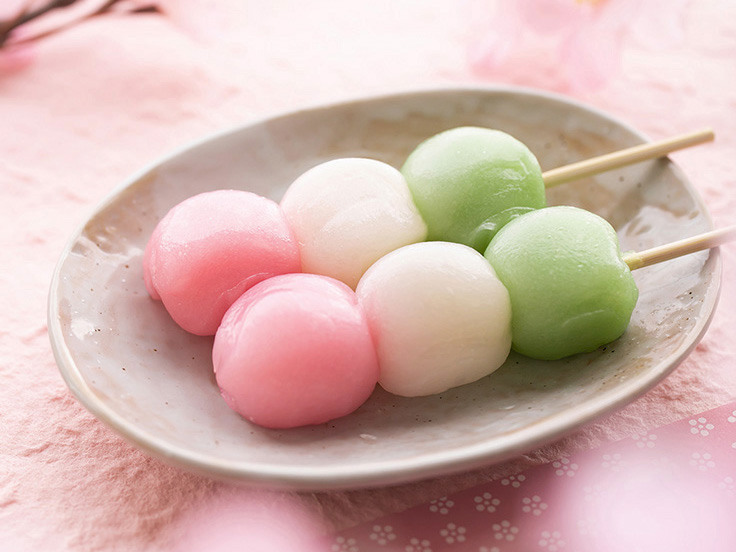
GETTY IMAGES
Starting in mid-to-late March, hanami, or cherry blossom viewing, becomes a national craze as the pale pink blossoms blanket the landscape. A popular wagashi to eat while gazing at the blossoms is hanami dango, which are humble sweet mochi dumplings colored white, pale green and pale pink — just like the surrounding landscape.
Tea is the best beverage to enjoy with wagashi. The sweetness of the morsels provides a perfect foil to the slight bitterness of the tea. In fact, many wagashi were developed to be part of the tea ceremony. At the pinnacle of wagashi for tea are nerikiri, delicate creations made with a paste that makes use of a dough combining rice and sugar called gyuhi and the finest white bean paste. Also called jo-namagashi, nerikiri represent the ultimate type of high-end sweet and are made throughout the year. But in spring they are shaped to represent the delicate shifts in the season: Ume (plum) blossoms in February give way to green and yellow nanohana (rapeseed blossoms), the aforementioned uguisu bird and camellia blossoms, and then bamboo shoots, flowing spring water, peach blossoms and, of course, cherry blossoms. They are the perfect refined sweets to partake of with matcha, preferably at a tea ceremony hosted by a tea master.
Whether you are able to attend an elegant tea ceremony, enjoy hanami, or just grab some sweets at a store, a springtime visit to Japan will be a feast for your eyes as well as your taste buds.



